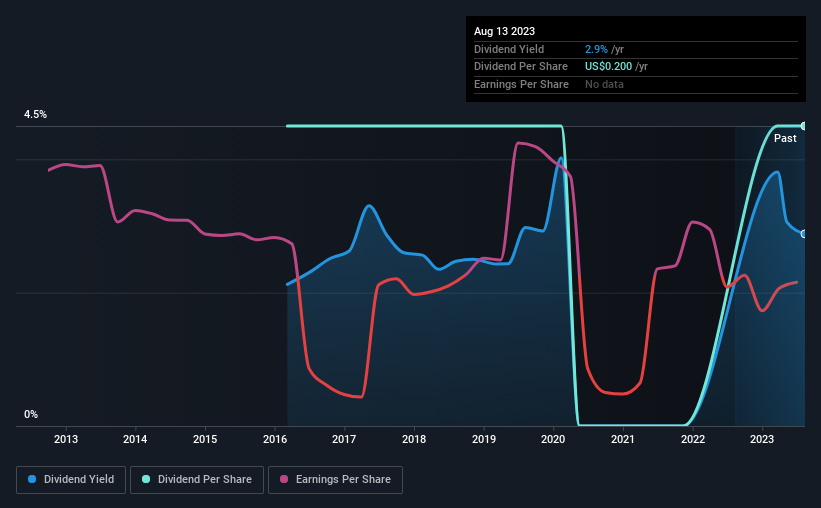Here's Why We're Wary Of Buying P&F Industries' (NASDAQ:PFIN) For Its Upcoming Dividend
It looks like P&F Industries, Inc. (NASDAQ:PFIN) is about to go ex-dividend in the next 4 days. The ex-dividend date is usually set to be one business day before the record date which is the cut-off date on which you must be present on the company's books as a shareholder in order to receive the dividend. The ex-dividend date is important as the process of settlement involves two full business days. So if you miss that date, you would not show up on the company's books on the record date. Therefore, if you purchase P&F Industries' shares on or after the 18th of August, you won't be eligible to receive the dividend, when it is paid on the 25th of August.
The company's upcoming dividend is US$0.05 a share, following on from the last 12 months, when the company distributed a total of US$0.20 per share to shareholders. Last year's total dividend payments show that P&F Industries has a trailing yield of 2.9% on the current share price of $6.94. Dividends are a major contributor to investment returns for long term holders, but only if the dividend continues to be paid. That's why we should always check whether the dividend payments appear sustainable, and if the company is growing.
Check out our latest analysis for P&F Industries
Dividends are typically paid from company earnings. If a company pays more in dividends than it earned in profit, then the dividend could be unsustainable. P&F Industries reported a loss after tax last year, which means it's paying a dividend despite being unprofitable. While this might be a one-off event, this is unlikely to be sustainable in the long term. With the recent loss, it's important to check if the business generated enough cash to pay its dividend. If cash earnings don't cover the dividend, the company would have to pay dividends out of cash in the bank, or by borrowing money, neither of which is long-term sustainable. It paid out 12% of its free cash flow as dividends last year, which is conservatively low.
Click here to see how much of its profit P&F Industries paid out over the last 12 months.
Have Earnings And Dividends Been Growing?
Companies with falling earnings are riskier for dividend shareholders. If earnings fall far enough, the company could be forced to cut its dividend. P&F Industries reported a loss last year, and the general trend suggests its earnings have also been declining in recent years, making us wonder if the dividend is at risk.
Many investors will assess a company's dividend performance by evaluating how much the dividend payments have changed over time. P&F Industries's dividend payments are effectively flat on where they were seven years ago. When earnings are declining yet the dividends are flat, typically the company is either paying out a higher portion of its earnings, or paying out of cash or debt on the balance sheet, neither of which is ideal.
We update our analysis on P&F Industries every 24 hours, so you can always get the latest insights on its financial health, here.
The Bottom Line
Is P&F Industries worth buying for its dividend? We're a bit uncomfortable with it paying a dividend while being loss-making. However, we note that the dividend was covered by cash flow. Bottom line: P&F Industries has some unfortunate characteristics that we think could lead to sub-optimal outcomes for dividend investors.
With that being said, if you're still considering P&F Industries as an investment, you'll find it beneficial to know what risks this stock is facing. Be aware that P&F Industries is showing 3 warning signs in our investment analysis, and 1 of those is potentially serious...
Generally, we wouldn't recommend just buying the first dividend stock you see. Here's a curated list of interesting stocks that are strong dividend payers.
Have feedback on this article? Concerned about the content? Get in touch with us directly. Alternatively, email editorial-team (at) simplywallst.com.
This article by Simply Wall St is general in nature. We provide commentary based on historical data and analyst forecasts only using an unbiased methodology and our articles are not intended to be financial advice. It does not constitute a recommendation to buy or sell any stock, and does not take account of your objectives, or your financial situation. We aim to bring you long-term focused analysis driven by fundamental data. Note that our analysis may not factor in the latest price-sensitive company announcements or qualitative material. Simply Wall St has no position in any stocks mentioned.

